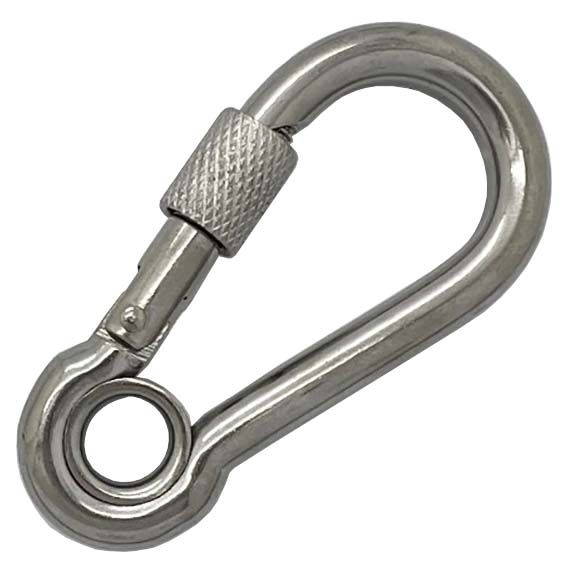
CARABINER CLIP
A carabiner clip with a lock, also known as a locking carabiner, is a specialized type of carabiner designed to provide an extra layer of security by preventing accidental opening of the gate. These locking carabiners are commonly used in activities where safety is paramount, such as rock climbing, mountaineering, caving, and other vertical pursuits.
Key features of a carabiner clip with lock:
Shape: Locking carabiners typically have a D-shaped or offset-D shape, which provides an optimal balance between strength and weight.
Gate: The gate of a locking carabiner operates differently from a regular snap hook or carabiner. It incorporates a locking mechanism that secures the gate in the closed position, making it less likely to open accidentally.
Locking Mechanism: There are various types of locking mechanisms used in these carabiners:
a. Screw Lock: In a screw-lock carabiner, the gate is manually secured by screwing a sleeve or barrel over the gate, preventing it from opening.
b. Twist Lock: A twist-lock carabiner features a spring-loaded sleeve that covers the gate. To open the gate, you need to twist the sleeve, which releases the gate.
c. Autolock or Triple Action: These locking carabiners have a more complex locking system, requiring multiple actions (such as pushing, twisting, and then opening the gate) to unlock the carabiner.
Materials: Locking carabiners are typically made of robust materials like steel or aluminum, ensuring durability and strength.
Uses of carabiners with locks:
Climbing: Locking carabiners are extensively used in climbing for anchoring, belaying, attaching ropes to harnesses, and building secure anchor systems.
Rescue Operations: Locking carabiners play a crucial role in rescue operations, where they are used to create strong connections and secure systems.
Rappelling: Rappelling or abseiling often involves using locking carabiners to attach oneself to the rappel device and anchor points securely.
Construction and Rigging: Locking carabiners are employed in construction and rigging for securing equipment and gear at heights.
Arboriculture: Arborists use locking carabiners for tree work, attaching themselves and their equipment to safety lines.
As with any climbing or safety equipment, it's essential to follow proper guidelines, manufacturer's instructions, and best practices when using locking carabiners. Regular inspection for wear and damage is crucial to ensure their reliability and safety during use.